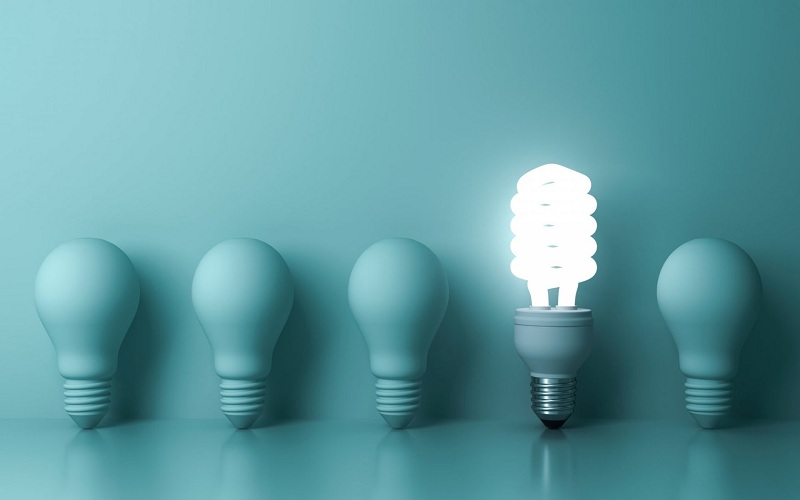Introduction
The landscape of lighting technology has undergone a significant transformation over the past few decades. One of the most notable advancements has been the development and widespread adoption of LED (Light Emitting Diode) technology. This article delves into the latest innovations in different types of LED technology and explores what lies ahead for Indian consumers.

The Evolution of LED Technology
LED technology has come a long way since its inception. Initially used in indicator lights and simple displays, LEDs have evolved to become a staple in various lighting applications. Their energy efficiency, long lifespan, and versatility have made them a popular choice for both residential and commercial use.
Significance of LED Technology in India
In India, the shift towards LED lighting has been driven by the need for energy efficiency and cost savings. The government’s push for sustainable energy solutions and the increasing awareness among consumers about the benefits of LEDs have significantly contributed to their adoption.
Current State of LED Technology
Adoption Rates in India
India has seen a rapid increase in the adoption of LED technology. Government initiatives like the Unnat Jyoti by Affordable LEDs for All (UJALA) scheme have played a crucial role in promoting LED usage. This has led to a substantial reduction in energy consumption and lighting costs for Indian households.
Popular Applications of LEDs
LEDs are now ubiquitous in various applications, ranging from household lighting to streetlights, automotive lights, and commercial spaces. Their adaptability and efficiency have made them a preferred choice for consumers and businesses alike.
Emerging Trends in LED Technology
Smart LED Lighting
One of the most exciting developments in LED technology is the integration of smart features. Smart LED lighting systems can be controlled remotely via smartphones or voice commands, allowing users to customize lighting according to their preferences. This not only enhances convenience but also contributes to energy savings.
Energy Efficiency Improvements
Continuous advancements in LED technology are leading to even greater energy efficiency. Modern LEDs consume significantly less power than traditional incandescent or fluorescent lights, making them an eco-friendly and cost-effective option for consumers.
Miniaturization and Flexibility
The trend towards miniaturization and flexibility in LED technology is opening up new possibilities. Flexible LED strips and tiny LED modules can be used in a variety of innovative ways, from intricate architectural lighting to wearable technology.
Technological Advancements in LEDs
Quantum Dot LEDs
Quantum Dot LEDs (QD-LEDs) represent a significant breakthrough in LED technology. These LEDs use quantum dots to produce pure, vibrant colors with enhanced efficiency. QD-LEDs are expected to revolutionize display technologies and provide superior performance in various lighting applications.
Micro-LEDs
Micro-LED technology involves the use of microscopic LEDs to create highly efficient and bright displays. Micro-LEDs offer better color accuracy, higher brightness, and lower power consumption compared to traditional LEDs. This technology holds great promise for future display applications, including televisions and wearable devices.
Organic LEDs (OLEDs)
Organic LEDs (OLEDs) use organic compounds to emit light when an electric current is applied. OLED technology is known for its excellent color reproduction and flexibility, making it ideal for use in smartphones, televisions, and other display devices. The development of more efficient and durable OLEDs is a key focus area in LED innovation.
Smart Home Integration
IoT and LED Technology
The Internet of Things (IoT) is playing a pivotal role in the evolution of LED technology. IoT-enabled LEDs can be integrated into smart home ecosystems, allowing users to control lighting through connected devices. This integration offers enhanced convenience, security, and energy management.
Voice-Controlled Lighting Systems
Voice-controlled LED lighting systems are becoming increasingly popular. By using voice assistants like Amazon Alexa or Google Assistant, users can effortlessly control their lighting, adjust brightness levels, and even change colors. This hands-free approach adds a new level of ease and sophistication to home lighting.
Energy Efficiency and Environmental Impact
Reduction in Energy Consumption
LEDs are renowned for their energy efficiency. They use up to 80% less energy than traditional lighting solutions, which translates to significant cost savings for consumers. This reduction in energy consumption also helps in lowering the overall carbon footprint.
Benefits to the Environment
The environmental benefits of LED technology extend beyond energy savings. LEDs contain no harmful substances like mercury, which is present in fluorescent lights. Additionally, their long lifespan reduces the need for frequent replacements, resulting in less waste and a positive impact on the environment.
LEDs in Commercial Spaces
Office Lighting Innovations
In commercial spaces, LEDs are being used to create dynamic and adaptable lighting environments. Modern office lighting solutions include tunable white LEDs that can adjust the color temperature throughout the day, enhancing productivity and well-being.
Retail and Hospitality Sectors
The retail and hospitality sectors are also leveraging LED technology to create inviting and engaging environments. LEDs are used for accent lighting, highlighting products, and creating ambiance in restaurants and hotels. The flexibility of LEDs allows businesses to design unique lighting experiences that enhance the customer experience.
Healthcare and LED Technology
Therapeutic Uses of LEDs
LEDs are making waves in the healthcare industry, particularly in therapeutic applications. Light therapy using LEDs is being used to treat a variety of conditions, including skin disorders, depression, and sleep disorders. The non-invasive nature of LED therapy makes it an attractive option for many patients.
LEDs in Medical Equipment
LED technology is also being incorporated into medical equipment. LEDs provide precise lighting in surgical instruments and diagnostic tools, improving accuracy and outcomes. Their reliability and energy efficiency make them ideal for use in healthcare settings.
LEDs in Automotive Industry
Headlights and Interior Lighting
The automotive industry has embraced LED technology for both headlights and interior lighting. LED headlights offer superior brightness and energy efficiency, enhancing safety and visibility on the road. Inside the vehicle, LEDs are used for ambient lighting, creating a more comfortable and stylish interior.
Future Automotive Applications
Looking ahead, LEDs are expected to play a crucial role in the development of autonomous vehicles and advanced driver-assistance systems (ADAS). Their ability to provide precise and adaptive lighting will be key to ensuring safety and efficiency in future automotive technologies.
Challenges and Barriers
High Initial Costs
Despite the numerous benefits of LED technology, high initial costs remain a barrier for some consumers. While LEDs offer long-term savings, the upfront investment can be a deterrent, especially for low-income households.
Technological Limitations
There are still some technological limitations to overcome in LED technology. Issues like color consistency, heat management, and the development of more efficient materials are areas that require ongoing research and innovation.
Government Initiatives and Policies
Incentives for LED Adoption
The Indian government has implemented various incentives to promote the adoption of LED technology. Subsidies, tax benefits, and the UJALA scheme are some examples of how the government is encouraging consumers and businesses to switch to LEDs.
Regulations and Standards
To ensure the quality and safety of LED products, the government has established regulations and standards. These measures help in maintaining consumer trust and ensuring that only high-quality LED products are available in the market.
Consumer Awareness and Education
Promoting the Benefits of LEDs
Consumer awareness campaigns are essential in promoting the benefits of LED technology. Educating consumers about the energy savings, environmental benefits, and long-term cost-effectiveness of LEDs can help in driving higher adoption rates.
Addressing Consumer Concerns
Addressing common consumer concerns, such as the initial cost and compatibility with existing fixtures, is crucial. Providing clear and accurate information can help consumers make informed decisions and feel more confident in adopting LED technology.
Future Prospects for Indian Consumers
Innovations on the Horizon
The future of LED technology looks promising, with ongoing innovations poised to bring even more benefits to consumers. Developments in smart lighting, energy efficiency, and new materials are expected to further enhance the performance and versatility of LEDs.
Potential Market Growth
The Indian market for LED technology is set to grow significantly in the coming years. With supportive government policies, increasing consumer awareness, and continuous technological advancements, LEDs will likely become the country’s dominant lighting solution.
Conclusion
In conclusion, LED technology advancements are transforming how we light our homes, workplaces, and cities. For Indian consumers, the future holds exciting possibilities with smarter, more efficient, and environmentally friendly LED solutions. As the technology continues to evolve, LEDs will undoubtedly play a pivotal role in shaping a sustainable and energy-efficient future for India.
FAQs
What are the benefits of using LEDs over traditional lighting?
LEDs offer numerous benefits over traditional lighting, including higher energy efficiency, longer lifespan, better durability, and lower environmental impact. They also provide instant lighting without warm-up time and are available in a wide range of colors and designs.
How do smart LEDs contribute to energy savings?
Smart LEDs can be programmed to adjust their brightness and color based on the time of day or occupancy. This optimization reduces energy consumption by ensuring that lights are only on when needed and at the appropriate brightness levels.
Are there any health concerns related to LED lighting?
LED lighting is generally safe for health. However, it’s important to use high-quality LEDs and avoid prolonged exposure to very bright lights. Some studies suggest that blue light from LEDs can disrupt sleep patterns, so it’s advisable to use warm-colored LEDs in bedrooms.
What should consumers look for when purchasing LED lights?
Consumers should consider factors such as brightness (measured in lumens), color temperature, energy efficiency (indicated by the Energy Star label), and the lifespan of the LED. It’s also important to check for compatibility with existing fixtures and dimmer switches.
How is the Indian government supporting LED technology adoption?
The Indian government supports LED adoption through initiatives like the UJALA scheme, subsidies, and tax benefits. These efforts aim to make LED technology more accessible and affordable for consumers, thereby promoting energy efficiency and sustainability.






Leave a Reply
You must be logged in to post a comment.